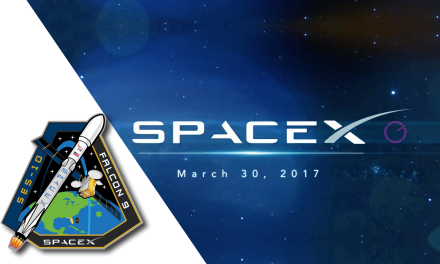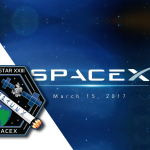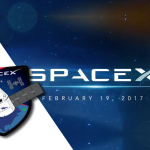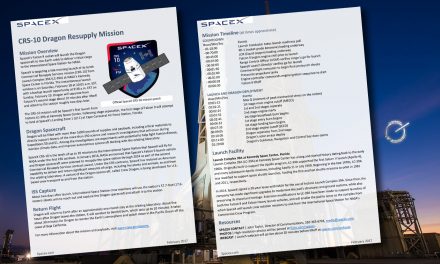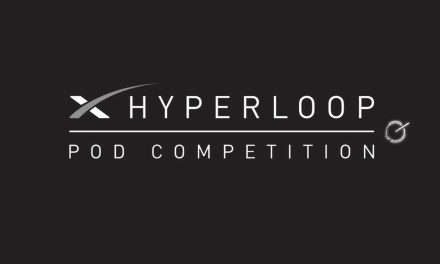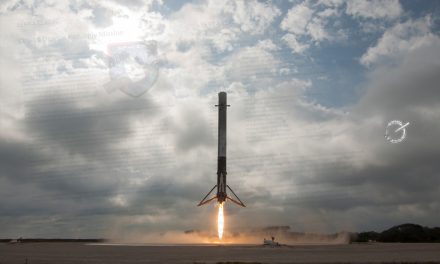CRS-10 ALL MAGIC
3 Magic CRS-10 Moments of the SpaceX webcast
Falcon 9 Liftoff
Falcon 9 landing
Dragon’s solar arrays deploy
Mission Overview
SpaceX’s Falcon 9 rocket will launch the Dragon spacecraft to low-Earth orbit to deliver critical cargo to the International Space Station for NASA.
SpaceX is targeting a late morning launch of its tenth Commercial Resupply Services mission (CRS-10) from Launch Complex 39A (LC-39A) at NASA’s Kennedy Space Center in Florida. The instantaneous launch window is on Saturday, February 18 at 10:01 a.m. EST, with a backup launch opportunity at 9:38 a.m. EST on Sunday, February 19. Dragon will separate from Falcon 9’s second stage about 10 minutes after liftoff and attach to the station roughly two days later.
The CRS-10 mission will be SpaceX’s first launch from
historic LC-39A at Kennedy Space Center. Following stage separation, the first stage of Falcon 9 will attempt to land at SpaceX’s Landing Zone 1 (LZ-1) at Cape Canaveral Air Force Station, Florida.
Dragon Spacecraft
Dragon will be filled with more than 5,000 pounds of supplies and payloads, including critical materials to directly support dozens of the more than 250 science and research investigations that will occur during Expeditions 50 and 51. Among the investigations are experiments with potential to help fight human disease, monitor climate data, and improve autonomous spacecraft docking with the orbiting laboratory.
SpaceX CRS-10 is the tenth of up to 20 missions to the International Space Station that SpaceX will fly for NASA under the first CRS contract. In January 2016, NASA announced that SpaceX’s Falcon 9 launch vehicle and Dragon spacecraft were selected to resupply the space station through 2024 as part of the second Commercial Resupply Services contract award. Under the CRS contracts, SpaceX has restored an American capability to deliver and return significant amounts of cargo, including live plants and animals, to and from the orbiting laboratory. A variant of the Dragon spacecraft, called Crew Dragon, is being developed for U.S.- based crew transport to and from the station.
Return Flight
Dragon will return to Earth after an approximately one month stay at the orbiting laboratory. About five hours after Dragon leaves the station, it will conduct its deorbit burn, which lasts up to 10 minutes. It takes about 30 minutes for Dragon to reenter the Earth’s atmosphere and splash down in the Pacific Ocean off the coast of Baja California.
For more information about the mission and payloads, visit www.nasa.gov/spacex.
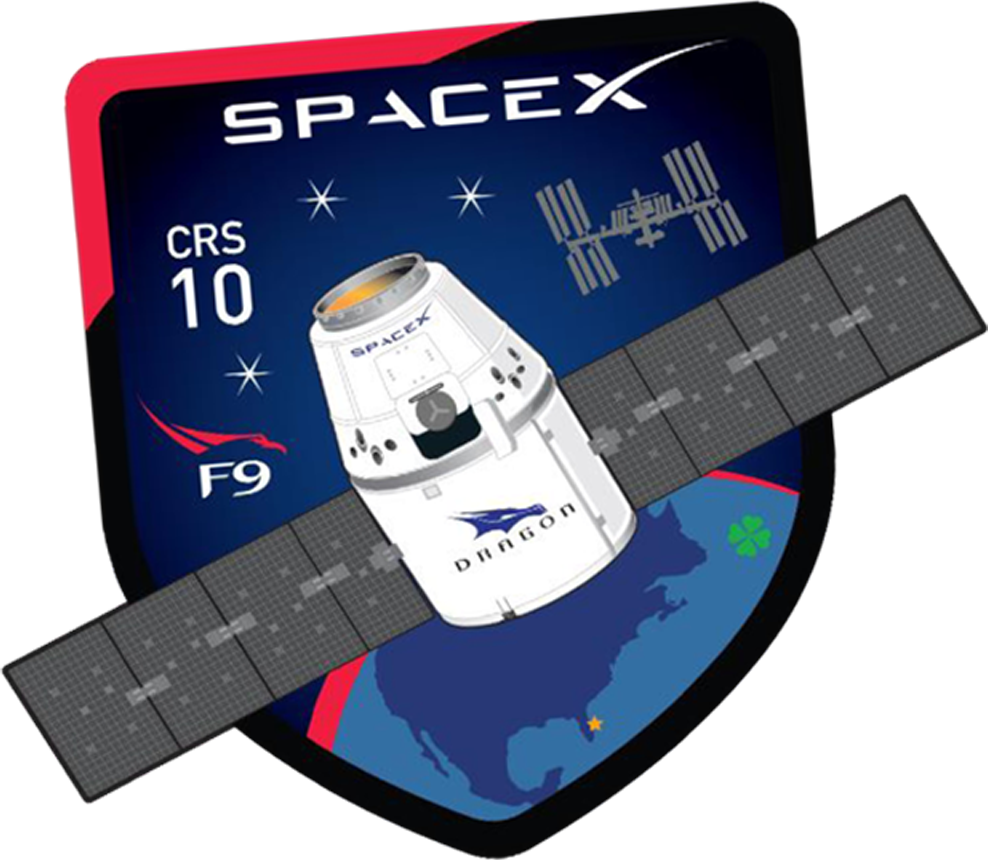
CRS-10
Tenth Commercial Resupply Services mission
ISS Capture
About two days after launch, International Space Station crew members will use the station’s 57.7-foot (17.6- meter) robotic arm to reach out and capture the Dragon spacecraft and attach it to the station.
All Magic CRS-10 Moments of the SpaceX webcast
CRS-10 | Press and play

T- 00:01:00
Command flight computer to begin final prelaunch checks
T- 00:01:00
Pressurize propellant tanks

T- 00:00:03
Engine controller commands engine ignition sequence to start
T 00:00:00
Falcon 9 Liftoff
T+ 00:01:15
Max Q (moment of peak mechanical stress on the rocket)

T+ 00:02:21
1st stage main engine cutoff (MECO)
T+ 00:02:24
1st and 2nd stages separate
T+ 00:02:32
2nd stage engine starts
T+ 00:02:41
1st stage boost back burn begins

T+ 00:06:32
1st stage entry burn begins

T+ 00:07:33
1st stage landing burn begins

T+ 00:08:17
Falcon 9 landing

T+ 00:09:24
2nd stage engine cutoff (SECO)

T+ 00:10:21
Dragon separates from 2nd stage

T+ 00:11:30
Explanation Dragon’s solar arrays deploy

T+ 00:12:51
Dragon’s solar arrays deploy

T+ 00:14:14
A few important milestones

T- 00:20:00
CRS-10 Hosted Webcast from the beginning
Launch Complex 39A at Kennedy Space Center, Florida
Launch Complex 39A (LC-39A) at Kennedy Space Center has a long and storied history dating back to the early 1960s. Originally built to support the Apollo program, LC-39A supported the first Saturn V launch (Apollo 4), and many subsequent Apollo missions, including Apollo 11 in July 1969. Beginning in the late 1970s, LC-39A was modified to support space shuttle launches, hosting the first and last shuttle missions to orbit in 1981 and 2011, respectively.
In 2014, SpaceX signed a 20-year lease with NASA for the use of historic Launch Complex 39A. Since then, the company has made significant upgrades to modernize the pad’s structures and ground systems, while also preserving its important heritage. Extensive modifications to LC-39A have been made to support launches of both the Falcon 9 and Falcon Heavy launch vehicles, and will enable the pad to serve as the complex from which SpaceX will launch crew rotation missions to and from the International Space Station for NASA’s Commercial Crew Program.
SPACEX CONTACT
John Taylor, Director of Communications, 310-363-6703, media@spacex.com.
PHOTOS
High-resolution photos will be posted at flickr.com/spacex.



